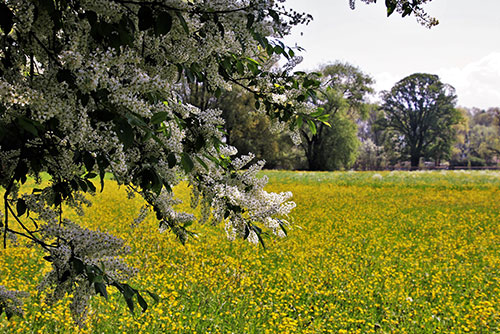
Top 7 Flowering Tree Species
Don’t be embarrassed by a dull yard. Knowing what flowering tree species will thrive in your region will help you plant spectacular trees that brighten your landscape.
nannenarboretum.org gathered species information on 7 flowering tree species, their colors, and the regions they thrive in.
White Flowering Tree Species
These flowering trees can appear to cover your yard with a soft yet striking blanket of white flowers as they announce the coming of warmer weather.
- Southern Magnolia (Magnolia grandiflora) – Named after French botanist Pierre Magnol, the southern magnolia is a magnificent species with deep significance in the south’s history.
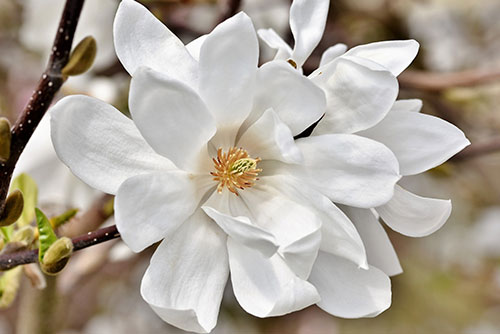
Height and Spread at Maturity: The southern magnolia reaches heights of 70 to 80 feet and a spread of 40 feet or more.
Special Requirements: This tree species should be planted in full sun and partial shade and thrives in most acidic, well-drained soils. Once established, the tree develops moderate drought tolerance.
Hardiness Zone: Thrives in Hardiness Zones 6 through 10.
This species blooms from mid-spring to early summer and may continue to bloom through summer.
- California Buckeye (Aesculus californica) – This California native can be found growing wild in slopes and canyons, coastal ranges, and Sierra foothills.
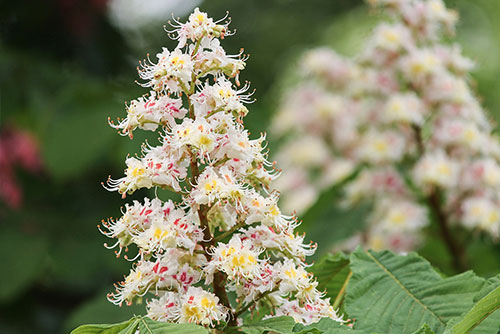
Height and Spread at Maturity: California Buckeye grows 10 to 40 feet high with up to a 30-foot spread
Special Requirements: This easy-to-grow tree adapts very well to drought conditions and thrives in xeriscaped or natural gardens. The seed, fruit, and flowers are toxic.
Hardiness Zone: Thrives in Hardiness Zones 6 through 8.
This species blooms in the spring and in summer. The blooms are an important nectar source for migrant butterflies.
Blue and Lavender Flowering Tree Species
Trees that bloom in blue and lavender shades are striking and a popular accent or specimen tree for your yard.
- Jacaranda (Jacaranda mimosifolia) – This tree species is popular for its appearance in parking lots, along roadways, and as a specimen or featured tree in lawns or landscapes.
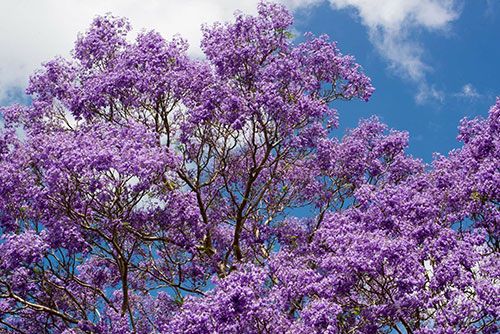
Height and Spread at Maturity: Jacaranda grows from 25 to 40 feet or more with a spread of 45 to 60 feet.
Special Requirements: This tree is incredibly easy to grow. As long as the soil is well-drained and the tree is planted in full sun, it is tolerant to nearly all soil types and is highly tolerant to drought.
Hardiness Zone: Thrives in Hardiness Zones 9b through 11.
This species blooms any time between late March and August. Its blooms appear in dense terminal clusters of lavender-blue, fragrant, and trumpet-shaped flowers.
- Blue Satin Rose-of-Sharon (Hibiscus syriacus Azurri) – This is the first seedless Rose-of-Sharon variety with its large, single blue flowers. This versatile species grows at a slow to medium rate. It grows well as a specimen, a hedge, perennial borders, in mixed beds, and in container gardens.
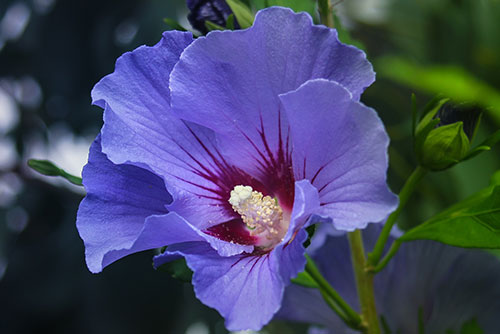
Height and Spread at Maturity: Blue Satin Rose-of-Sharon grows to 12 feet in height and a spread of up to 6 feet.
Special Requirements: This Rose-of-Sharon variety is incredibly easy to grow. As long as the soil is well-drained and the tree is planted in full sun, It is tolerant to nearly all soil types.
Hardiness Zone: Thrives in Hardiness Zones 5 through 9.
This species blooms in densely clustered spikes in the spring, attracting hummingbirds and butterflies.
Pink Flowering Tree Species
Pink flowering trees are always popular and in demand. These trees add incredibly brilliant splashes of color to your yard.
- Pink Dogwood (Cornus florida rubra) – For nearly 300 years, this tree species’ seedlings and budded trees are produced by the millions for nurseries all over the country.
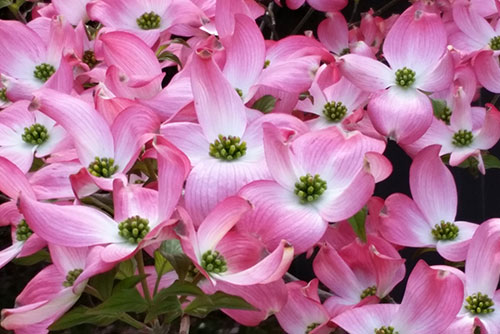
Height and Spread at Maturity: The pink flowering dogwood grows to heights of 25 feet or more with a spread of 25 feet.
Special Requirements: This tree species should be planted in full sun and partial shade and thrives in most acidic, well-drained soils.
Hardiness Zone: Thrives in Hardiness Zones 5 through 9.
This species blooms in April and May, with pink bracts resembling petals that radiate around a compact cluster of inconspicuous flowers.
- Rhapsody in Pink Crapemyrtle (Crape Myrtle) (Lagerstroemia indica) – This crapemyrtle adds a distinct look to any yard or landscape. The tree’s soft-pink late-season flowers contrast beautifully against its deep purple new foliage.
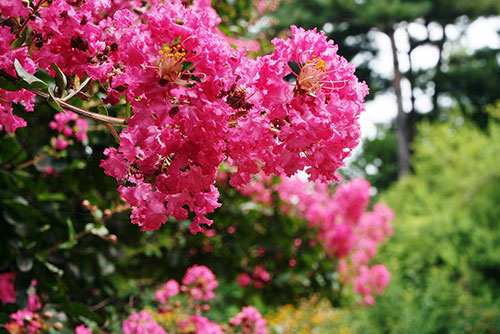
Height and Spread at Maturity: The Rhapsody in Pink Crapemyrtle grows up to 15 feet or more with a spread of 12 to 15 feet.
Special Requirements: This tree species thrives when planted in full sun, well-drained soil, and is drought and mildew-resistant.
Hardiness Zone: Thrives in Hardiness Zones 7 through 9.
This species blooms in early to mid-summer, in large clusters that persist through the first frost.
Yellow Flowering Tree Species
You’ll be hard-pressed to find a blooming tree that screams “Spring” like one with yellow blooms sprinkled over its graceful branches. Consider these species:
- Forsythia (Forsythia x intermedia) – Named after English horticulturist William Forsythe, the forsythia is a fast-growing, yellow flowering showoff that will always be among the first to bloom each spring.
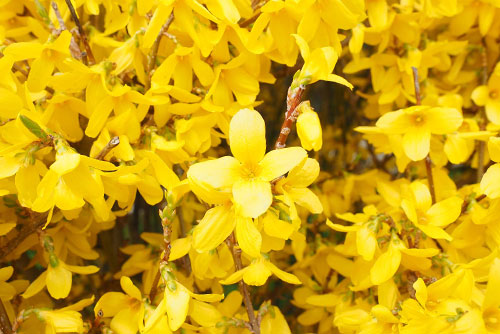
Height and Spread at Maturity: Forsythia grows to 10 feet in height and a spread of up to 12 feet.
Special Requirements: This tree species should be planted in full sun and partial shade and thrives in most acidic, well-drained soils.
Hardiness Zone: Thrives in Hardiness Zones 5 through 8.
This species blooms in very early spring with yellow, bell-shaped flowers that emerge on the previous year’s growth. Pruning immediately after flowering will set up your forsythia for the following year’s blooms.
Flowering Trees
In this article, you discovered species information, colors, and blooming habits of seven of the more popular flowering trees for your yard.
By planting flowering trees in your yard, you are adding color, diversity, and natural beauty to an otherwise bland landscape.
Without diversifying the plant-life of your yard, it will lack overall health and will leave you embarrassed by an absence of color each growing season.
Sources:
gardeningsolutions.ifas.ufl.edu/plants/trees-and-shrubs/trees/sweet-acacia.html
plants.ces.ncsu.edu/plants/forsythia-x-intermedia/
edis.ifas.ufl.edu/st317